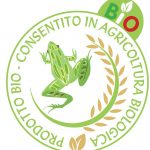- Via Santhià, 5 - 13040 Carisio (VC)
- 0161 97 28 23
- lucaviano68
- info@lucaviano.it
Slow release organic fertilizer with high nitrogen content

Main component of Crushed hooves and horns is keratin (found in hair, nails, etc.), a chemical substance similar to albumin, with almost the same centesimal composition, except for sulphur, present in variable percentages ( 0,7-5); other elements are present as follows:
Basically the Nitrogen present in HOOF & HORN MEAL is not more that 16% and decreases to 13% with the increase of impurities and refining grades.
When water is present, granular HOOF & HORN MEAL swells considerably, then macerates, leaving cavities thus making soil more aerated and more apt to root respiration and oxygenation processes.
With the aid of soil’s nitrogenizing bacteria, keratin creates processes of dual split and then creates ammonia and carbon dioxide; ammonia is easily held by the soil as it has a strong absorbing power; then it nitrogenizes and is assimilated by the plants; carbon dioxide creates pressure on the walls of the internal spaces, enlarging it; soil raises, becomes porous like dough; it allows gas exchanges and vegetable life; from this point of view HOOF & HORN MEAL favours soil heating just like organic fertilisers such as manure.
Munz e Girard’s studies on HOOF & HORN MEAL, show that horns have a faster nitrogenation than cow manure and less than half of ammonium sulphate’s; however we deem that in the soil, the phenomenon may vary and new studies should be made. It’s however certain that HOOF & HORN MEAL slowly releases its nitrogen to the plants without creating weeds nor functional imbalances; when directly administered at seeding time, in solid preparation activities, it follows the plant through its vegetative phases, including seed ripening; it is common opinion that it increases crop yield in comparison to other fertiliser which create a lush development but exhaust their properties too soon or are washed away by waters.
HOOF & HORN MEAL contains 50% of carbon, therefore it favours bacterial life, offering the carbon matter that nitrogen fixing bacteria elaborate in order to generate nitrates.
It does not generate physiological reactions increasing soil acidity; this explains why it is used (adding lime) in TIRED or acid soils due to long submersions, where using certain fertilisers such as ammonium sulphate would be harmful.
Associated with other substances (Super-phosphates, Chlorides, Sulphates) it does not create mass heating o nor internal reactions creating losses or degenerations; it is therefore especially used as a mix.
With regards to dosage, in our opinion proportions should vary according to the nature of the soil; of cultivation methods and any smart agrarian should vary the quantities of the fertilisers. We do recommend pre-made formulas; depending on the soil conditions, each case should be individually examined prior to determining quality and quantity of fertilisation. Roughly, an average of 200-250 Kg/Ha of HOOF & HORN MEAL is normally used.
HOOF AND HORN MEAL has multiple characteristics: besides being a great source of organic nitrogen, its nutrient availability is slower and therefore, being a slow transfer fertiliser, it sustains the crop through its whole cycle; it’s hydroscopic therefore it holds humidity, gradually releasing it during dry weather periods. Besides these characteristics, CHOOF & HORN MEAL is also a gret fixing agent and therefore used in floriculture and for ornamental lawns.
It notably increases the micro-flora and micro-fauna of the terrain, reforming humus and turning soil soft, allowing root system aeration.
May be available both in NATURAL and ROASTED and in various granulometries to satisfy every need and any kind of cultivation.
Organic Nitrogen (N): 13-14%
| DESCRIPTION ANALYSIS OF MIS. | RESULT | UNIT OF MIS. |
| Tolal nitrogen as N | 15,2 | % |
| Organic nitrogen | 14,8 | % |
| Nitric nitrogen as N | <LD | % |
| Ammonia nitrogen as N | 0,16 | % |
| Ureic nitrogen | 0,04 | % |
| Total phosphorus pentoxide as P205 | 0,285 | % |
| Water soluble potassium oxide as K20 | 0,145 | % |
| pH | 6,88 | Umidità |
| Water content | 11,0 | % |
| Organic carbon humified as C | 0,75 | % |
| Organic carbon as C | 47,4 | % |
| Copper as Cu | 15,8 | mg/kg |
| Zinc as Zn | 33,8 | mg/kg |
| Calcium as Ca | 0,221 | % |
| Iron as Fe | 0,196 | % |
| Magnesium as Mg | 346 | mg/kg |
| Boron as B | 11,9 | mg/kg |
| Humic acids | 1,31 | % |
| Water soluble phosphorus pentoxide as P205 | 0,126 | % |
| Phosphorus pentoxide soluble in water and neutral ammonium citrate such as P205 | 0,239 | % |
| Water soluble sulfur dioxide as S03 | 0,07 | % |
© Copyright 2020 – It is forbidden the total or partial reproduction of this site or content without permission.The products and the brands exposed are the property of the respective owners.